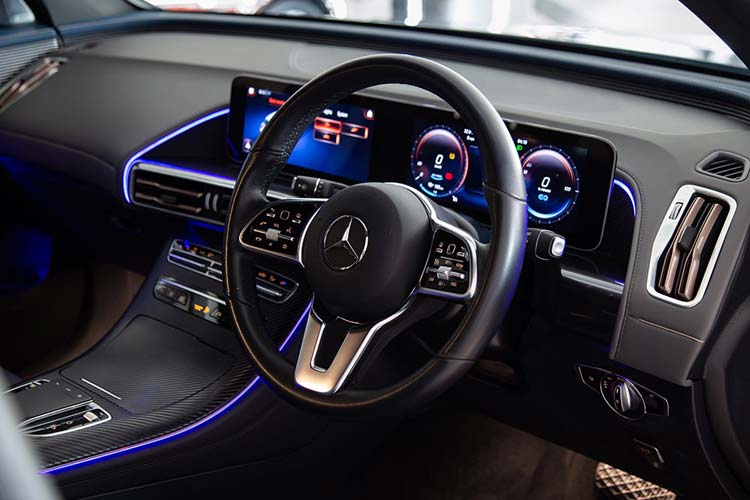The cars of today bear little resemblance to the first automobiles that hit the road over a century ago. What was once a manually operated mechanical machine has evolved into a sophisticated computer on wheels.
Modern automotive technology blurs the line between smartphone and vehicle, integrating cutting-edge innovations in connectivity, autonomy, entertainment, and more. From GPS navigation and multi-angle cameras to head-up augmented reality displays and active safety systems, today’s cars seem straight out of science fiction. But the rapid pace of advancement shows no signs of slowing.
As artificial intelligence, 5G networks, and new battery chemistries shape the auto industry’s future, the in-car experience stands to become almost unrecognizable compared to the analog days of old. Beyond promising greater convenience and safety, this automotive tech revolution also raises intriguing questions.
How will it transform mobility and society? Will drivers cede control to their vehicles to focus on productivity during commutes? Will cars transcend mere transportation and become immersive theaters, gaming spaces, or even restaurants? The only certainty is continued innovation. Join us as we cruise through the exhilarating new world of car technology and glimpse what promises to elevate your next drive.
The Digital Takeover
In the early days of the automobile industry, innovations focused primarily on mechanical engineering – increasing horsepower, improving combustion efficiency, and adding safety features like seatbelts and airbags. While these fundamentals remain critical, rapid digitalization over the past decade enabled vehicles to evolve beyond mere transportation into high-tech mobility pods.
Sophisticated software now complements robust hardware under the hood to elevate convenience and customize preferences. Touchscreens stream entertainment and connect devices, voice assistants adjust in-cabin controls hands-free, and active sensors enhance safety and handling. As consumers increasingly expect their cars to mimic smartphones, the auto industry answered the call by going digital.
Smarter Infotainment for the Connected Age
Integration with personal devices to access navigation, playlists, and contacts started the high-tech trend. Next came embedded touch displays delivering at-a-glance information to supplement gauge clusters. Fast forward again to today with console screens spanning over 12 inches in many models and presenting vibrant graphics equal to the latest tablets and mobile devices.
The user experience keeps stepping up through intuitive menus, natural voice commands via Siri, Alexa, and other AI assistants, as well as support for wireless Apple CarPlay and Android Auto mirroring. Surround view camera systems further enhance driver visibility while premium audio options like BOSE systems deliver theater-like sound. Going forward, built-in apps and predictive recommendations aim to make daily drives simpler and more engaging.
ADAS: Steering to Increased Safety
While infotainment transforms entertainment preferences, advanced driver assistance systems (ADAS) focus on elevating safety and efficiency. ADAS covers a range of intelligent capabilities including automated braking, lane-keeping assist, adaptive cruise control, blind spot monitoring, parking assistance, and more. Integrating cameras, radar, ultrasonic sensors, and artificial intelligence, these innovations continually scan surroundings to catch risks drivers may miss.
For example, infrared night vision allows seeing pedestrians and animals in low light. Vibration alerts in seats and steering wheels remind wandering minds to remain alert. As adoption spreads, ADAS proves vital for reducing accidents while easing the attentional demands of driving – letting automation shoulder more responsibility.
Greener By Design
Along with smartening systems under the hood, automakers also respond to growing calls for eco-consciousness from consumers and regulators alike. This translates to several fronts of innovation focused on boosting sustainability. Firstly, various electric vehicles (EVs) now offer zero direct emissions paired with exhilarating torque propulsion for a guilt-free ride.
Supporting this shift, expanded public charging infrastructure across urban centers provides added accessibility and range confidence. Many brands also increasingly source recycled materials for manufacturing components along with bio-derived fabrics for upholstery. Through both electrification and sourcing improvements, greener cars align environmental stewardship with the freedom of driving.
Connecting to Smarter Cities
Looking beyond the individual ride experience, connected vehicles now also interlink with surrounding infrastructure to improve collective traffic management. Known as vehicle-to-everything (V2X) communication, onboard units allow real-time transmission of telematics and sensor data.
This aids intelligent transportation systems in monitoring congestion while optimizing traffic light timing and advising alternate routes to reduce gridlock – getting more people where they need efficiently. Furthermore, as more self-driving shuttles and robo-taxis enter urban mobility ecosystems, V2X integration and autonomous driving algorithms will enable even smarter on-demand transportation while reducing parking needs.
What Does the Future Hold?
Speaking of autonomy, self-driving technology though still facing hurdles, makes steady strides toward public adoption in coming years as sensor capabilities improve and regulations evolve. Further down the road, autonomous innovation could potentially enable novel purpose-built vehicle form factors once controls like steering wheels become obsolete. Personal quadcopters for low-altitude urban flight? Perhaps. However, safety and infrastructure challenges still pose significant barriers.
Through the cross-pollination of mobility innovation across automotive, aerospace, and other adjacent industries, cars continue their high-tech metamorphosis beyond mechanical contraptions toward ultimate driving/riding machines tailor-made for integrating human lifestyle demands with broader environmental and traffic flow efficiencies.
Balancing Innovation with Accessibility
Amidst the hype cycle surrounding bleeding-edge automotive technology, it remains important to balance advancement with the reliability and practicality the average consumer requires. As vehicles grow increasingly complex and packed with sensors and embedded code, ensuring cybersecurity and data privacy also enter critical conversations in the community.
Additionally, the costs associated with developing and implementing next-gen systems contribute to sticker prices – often putting high-tech features out of reach for budget-focused buyers despite their proven benefits. Through ongoing carrot-and-stick discussions around expanding ADAS mandates, EV incentives, and communications infrastructure lobbying, regulators play a key role in shaping how innovation balances across the industry and consumer landscape in the years ahead.
Looking Forward
From touchscreens to EVs to autonomy and connectivity with smart cities, vehicle technology moves exceptionally fast -making the family car of just a decade ago seem antiquated. Controlled predominantly by mechanical levers and dials, the automobile adopted a model of relative stability for nearly a century since its inception.
But no more in today’s digital era! Instead, rapid software iteration cycles similar to our phones and laptops now revolutionize how four wheels meet the road. As Moore’s Law unleashes exponential tech growth tailpipes forward, automakers continue flooring innovation. What this holds for the cabin, efficiency, safety, and driving dynamics for the future poses exciting frontiers ahead!




